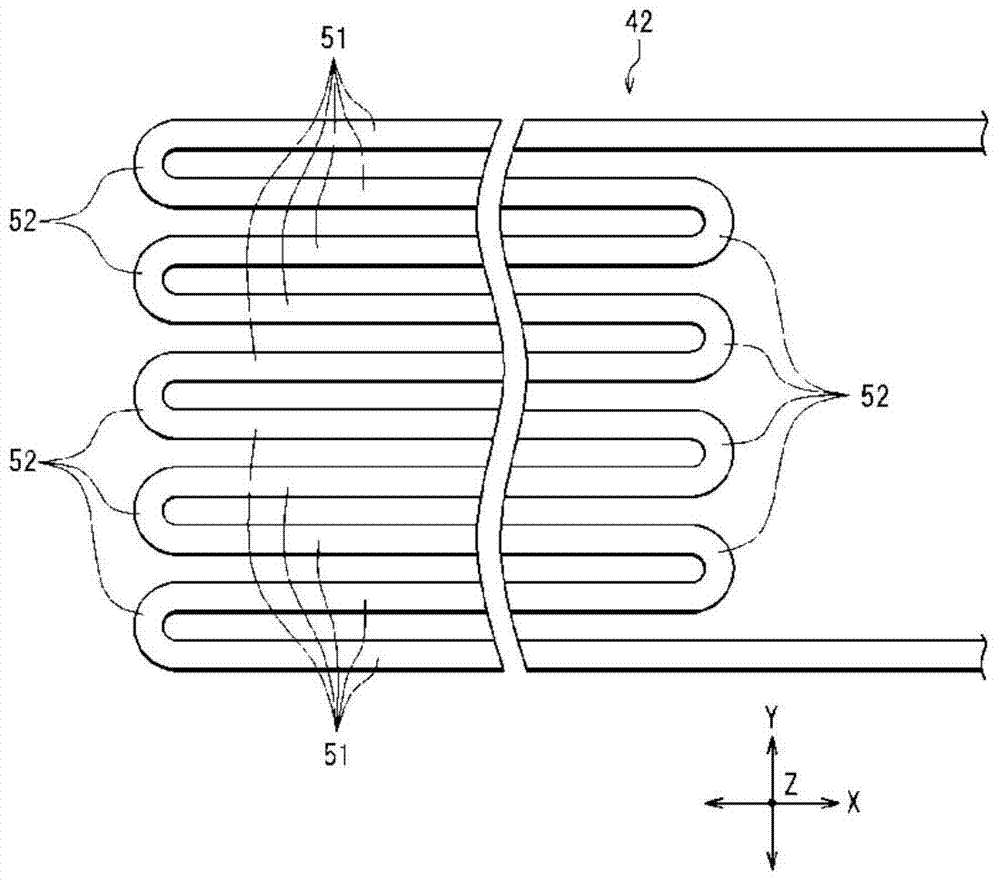Flexible Copper Clad Laminates
A technology of copper clad laminate and copper clad layer, applied in the direction of layered products, metal layered products, circuit substrate materials, etc., can solve the problem of difficult to meet the requirements of high density, and achieve the effect of high bending resistance
- Summary
- Abstract
- Description
- Claims
- Application Information
AI Technical Summary
Problems solved by technology
Method used
Image
Examples
Embodiment
[0071] Hereinafter, the present invention will be described in more detail based on examples. In addition, each characteristic evaluation in the following Examples was performed by the following method.
[0072] [Measurement of tensile modulus of elasticity]
[0073] Using STROGRAPH R-1 manufactured by Toyo Seiki Co., Ltd., the value of the tensile modulus was measured in an environment with a temperature of 23° C. and a relative humidity of 50%.
[0074] [Measurement of Coefficient of Thermal Expansion (CTE)]
[0075] Using a thermomechanical analyzer manufactured by Seiko Instruments, the temperature was raised to 250°C, and after being kept at this temperature for 10 minutes, the average thermal expansion coefficient (linear thermal expansion coefficient) from 240°C to 100°C was obtained by cooling at a rate of 5°C / min. ).
[0076] [Measurement of surface roughness (Rz)]
[0077] The surface roughness of the contact surface side with the polyimide layer of copper foil w...
Synthetic example 1
[0085] Add N,N-dimethylacetamide to a reaction vessel equipped with a thermocouple and a stirrer and capable of introducing nitrogen, while putting 2,2-bis[4-(4-aminophenoxy)phenyl into the reaction vessel ] Propane (BAPP) and stir in a container while allowing it to dissolve. Next, pyromellitic dianhydride (PMDA) was charged so that the total amount of monomers charged was 12 wt %. Thereafter, stirring was continued for 3 hours to perform a polymerization reaction, and a resin solution of polyamic acid a was obtained.
[0086] The coefficient of thermal expansion (CTE) of a polyimide film with a thickness of 25 μm formed from polyamic acid a is 55 × 10 -6 / K.
Synthetic example 2
[0088]Add N,N-dimethylacetamide to a reaction vessel equipped with a thermocouple and a stirrer and capable of introducing nitrogen, and put 2,2'-dimethyl-4,4'-diaminobiphenyl into the reaction vessel (m-TB) and stir in the container to dissolve. Next, add 3,3',4,4'-biphenyltetracarboxylic dianhydride (BPDA) and pyromellitic dianhydride (PMDA), and make the total amount of monomer input be 15wt%, and the molar ratio of each anhydride (BPDA:PMDA) is 20:80. Thereafter, stirring was continued for 3 hours to perform a polymerization reaction, and a resin solution of polyamic acid b was obtained.
[0089] The coefficient of thermal expansion (CTE) of a polyimide film with a thickness of 25 μm formed from polyamic acid b is 22 × 10 -6 / K.
PUM
| Property | Measurement | Unit |
|---|---|---|
| thickness | aaaaa | aaaaa |
| thickness | aaaaa | aaaaa |
| thickness | aaaaa | aaaaa |
Abstract
Description
Claims
Application Information
 Login to View More
Login to View More - R&D
- Intellectual Property
- Life Sciences
- Materials
- Tech Scout
- Unparalleled Data Quality
- Higher Quality Content
- 60% Fewer Hallucinations
Browse by: Latest US Patents, China's latest patents, Technical Efficacy Thesaurus, Application Domain, Technology Topic, Popular Technical Reports.
© 2025 PatSnap. All rights reserved.Legal|Privacy policy|Modern Slavery Act Transparency Statement|Sitemap|About US| Contact US: help@patsnap.com



